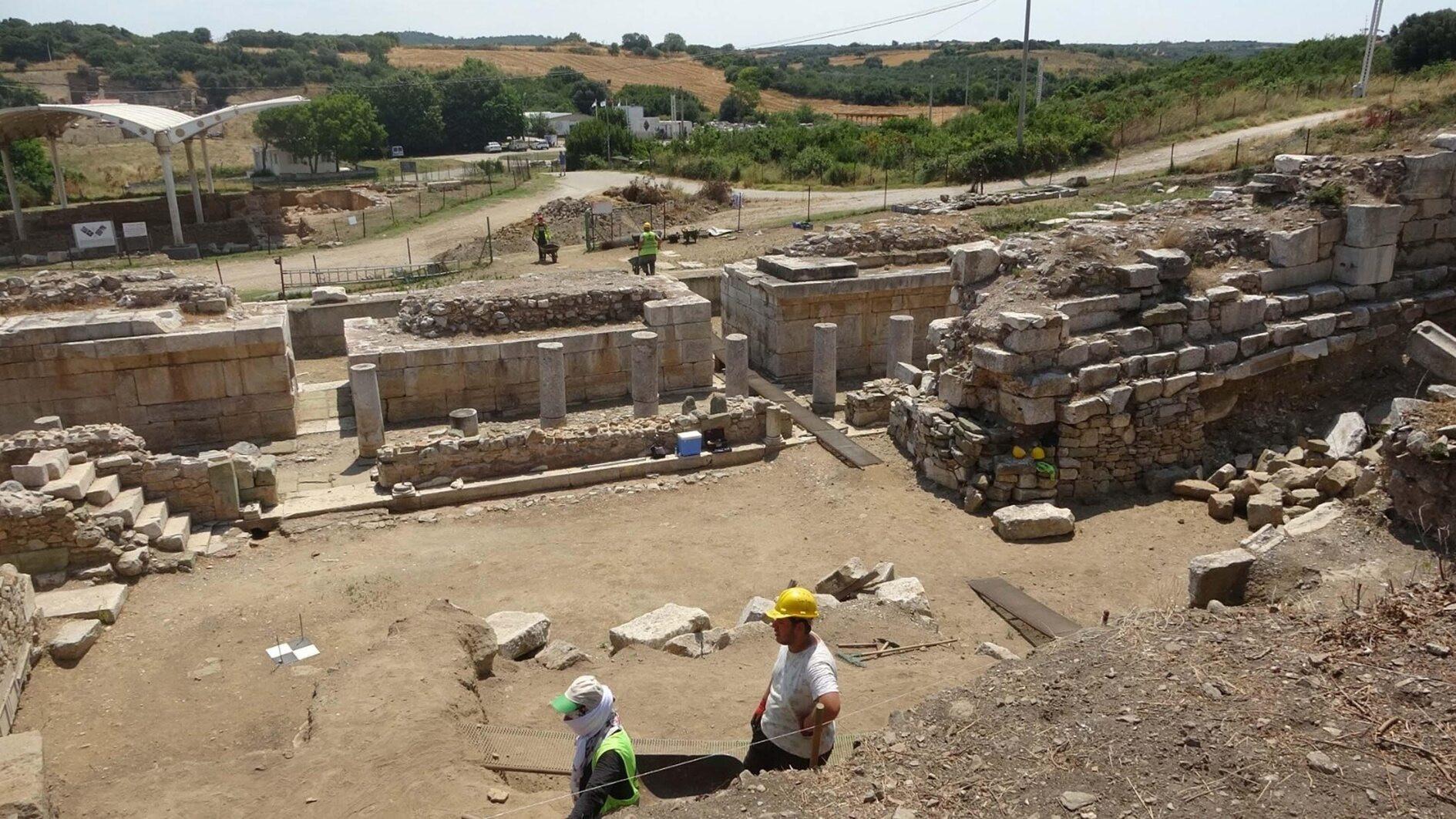
Underwater studies in Parion, a 2,700-year-old port city from the Roman Empire in Kemer village of the northwestern province of Çanakkale’s Biga district, have unearthed the second ancient port of the city.
Excavations continue in the ancient city of Parion with a team of 25 people, 17 of whom are foreigners, under the management of Ondokuz Mayıs University’s Professor Vedat Keleş.
“This port is a little smaller in size than the southern port, that is, the trade port, and its inner part is filled with alluvium accumulated by the stream passing through the city. Parion is a legion colony. Therefore, there may be a possibility that this place is a military port,” he said.
Underwater work was carried out for the first time this year in the city and during these works, the second ancient harbor of Parion has been unearthed.
Stating that this is the 20th year of the excavations in Parion, Keleş said, “This is an important source of pride for us. When we look at 20 years, I think that the Parion work has done its part in the past 20 years in terms of excavation, restoration-conservation, publication and training of scientists. This year, we initiated underwater studies. As we all know, Parion is an important port city in the Northern Troas. We already knew that we had a southern port. This is mentioned in ancient sources. We were thinking there could also be a northern port. But this was always a question mark in our minds. With the underwater studies, we have determined that this place is also a port.”
Stating that Parion was a legion colony, Keleş said, "However, this port is a little smaller in size than the southern port, which is the trade port, and its interior is filled with alluviums accumulated by the stream passing through the city. Parion is a legion colony. Therefore, there may be a possibility that this place is a military port. The underwater studies we will carry out will give us more detailed information on this issue.”
Keleş noted that excavations continued in two places during the excavation season: “One is theater, the other is the agora. Foreign faculty members work in the agora. We work in the theater. The theater work is difficult because it is destroyed. Because a city wall was built over the stage building and almost all the seating rows and architectural parts of the theater were used within this city wall. Therefore, the structure seems to have changed considerably in the late period. Even though we have some trouble due to this destruction, our work progresses slowly. Apart from this, restoration work also continues.”
Stating that there is a lot to be done, Keleş said, “Expropriations should end and we need workers. The city we excavated is a city with a high rate of destruction. We need to reveal the city. We need a workforce for this. I would like to address local administrations from here. If they support us, or at least provide workers, we can continue excavations for 12 months without interruption as long as the climate allows.”